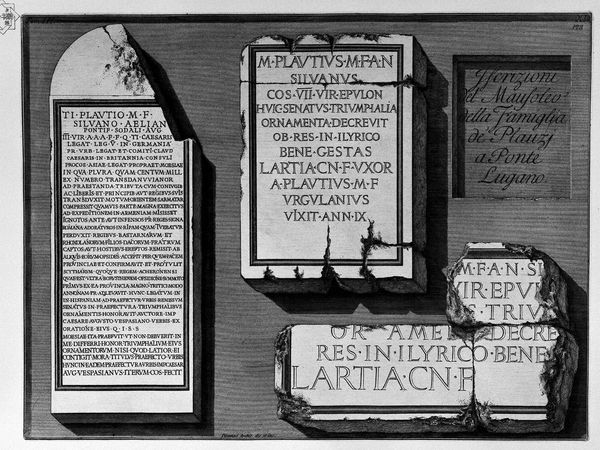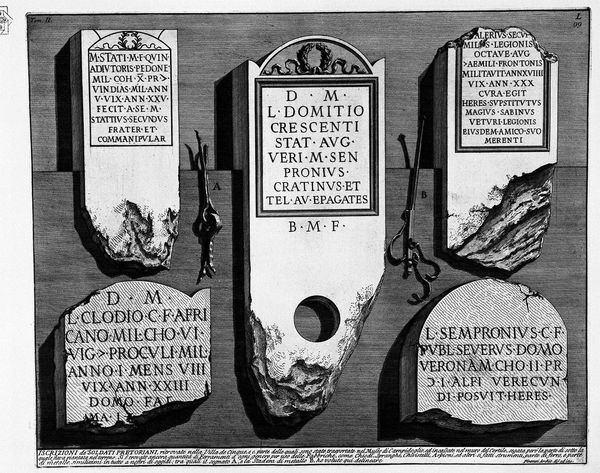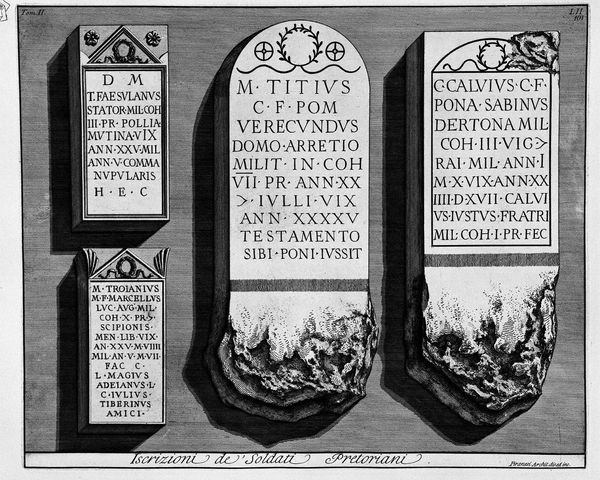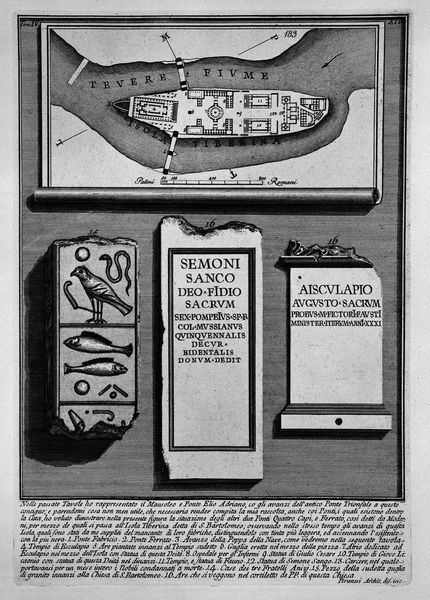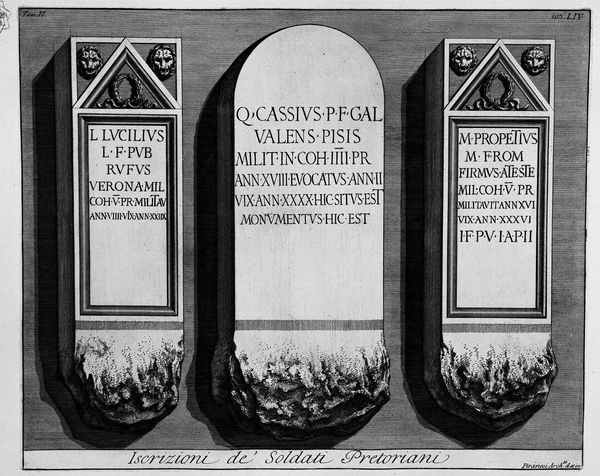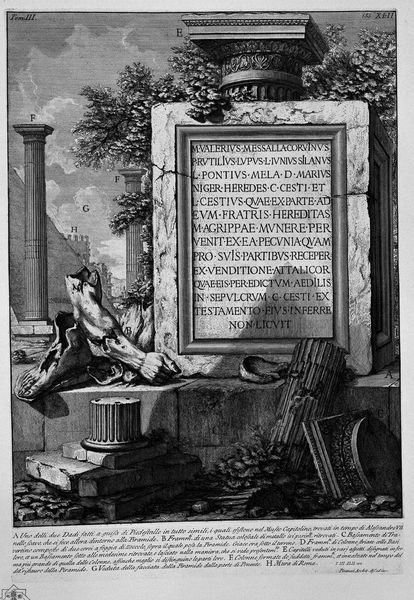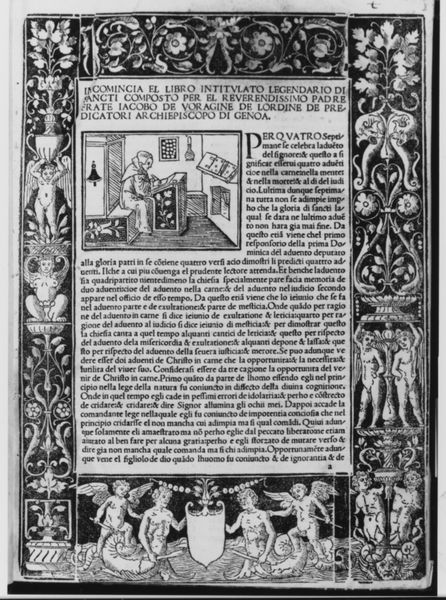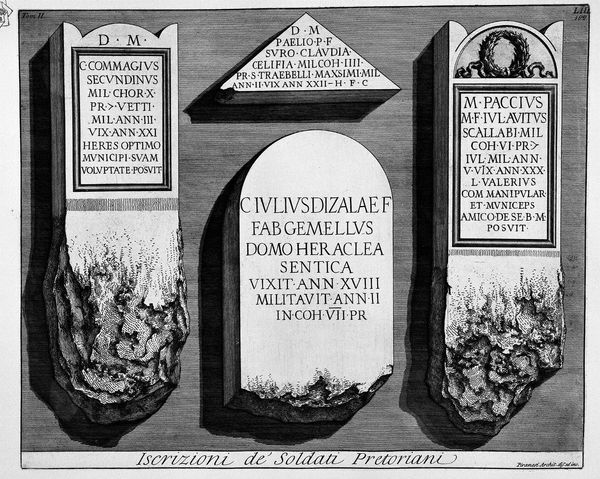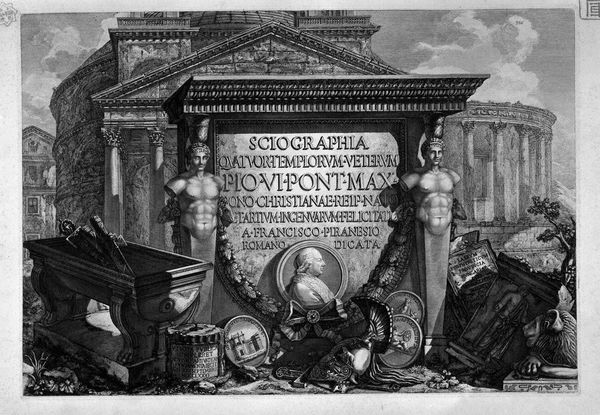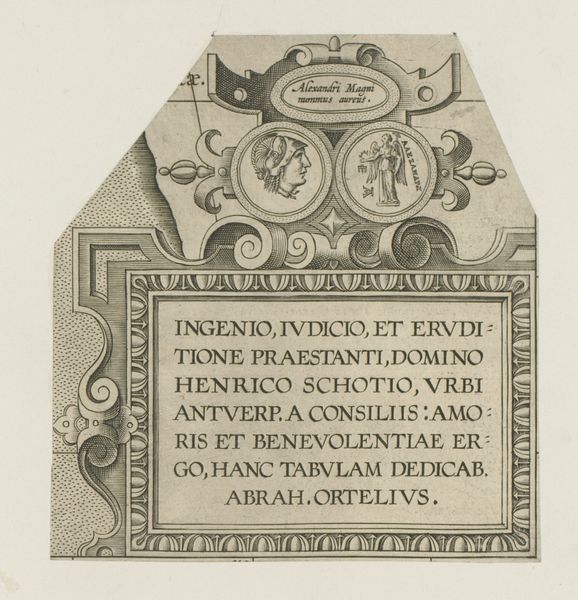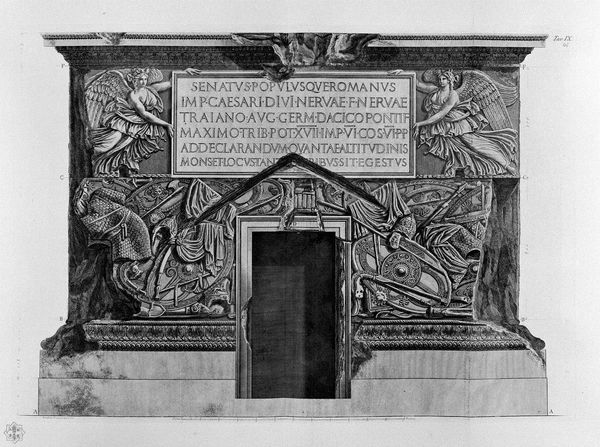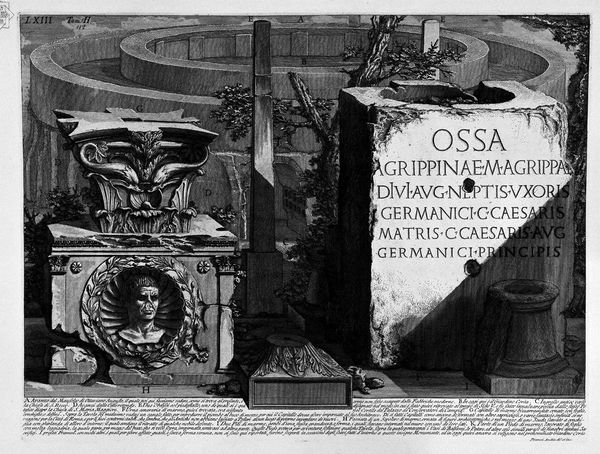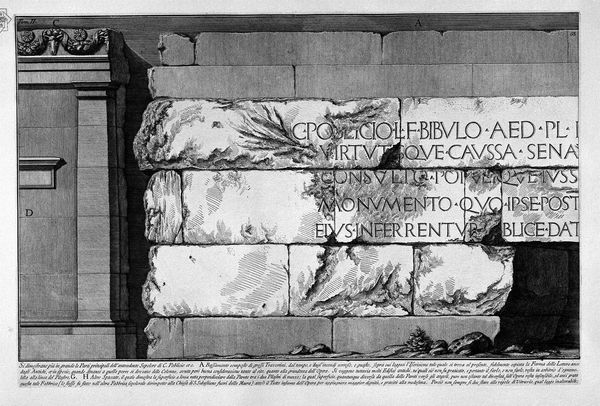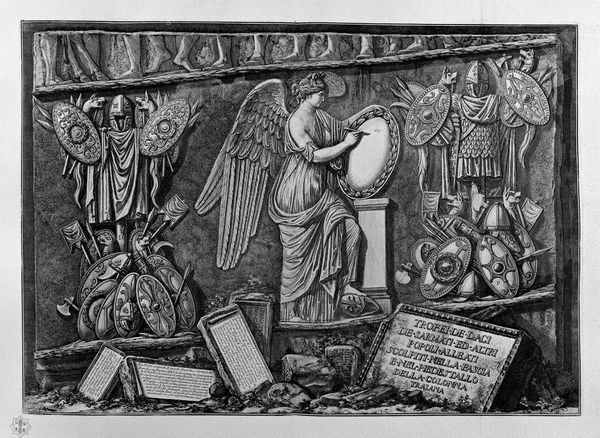
Black and white mosaic floor of the Temple of the cell referred to above, and which was inscribed at the entrance of the enclosure
0:00
0:00
drawing, print, etching, paper, ink, engraving, architecture
#
drawing
#
neoclacissism
# print
#
etching
#
classical-realism
#
paper
#
ink
#
geometric
#
history-painting
#
engraving
#
architecture
Copyright: Public domain
This black and white mosaic floor was documented by Giovanni Battista Piranesi, around the mid-18th century. It represents inscriptions found within the Temple of Isis. The mosaic is made from small pieces of stone or glass, carefully arranged to create a pattern, then set into mortar. Look closely at the details: the lines of the text, the bust, and the architectural remnants. This work wasn't just made of durable materials. It also demanded a significant amount of labor. Each piece had to be individually placed, which implies a whole economy of makers, and social stratification. Consider too that the process of uncovering, recording, and reinterpreting ancient artifacts was part of a broader cultural movement. These material fragments were not only aesthetic objects, but also historical documents, mined for information. The act of making, whether ancient or modern, is never just about the object itself. It’s a complex layering of materials, making, and historical context.
Comments
No comments
Be the first to comment and join the conversation on the ultimate creative platform.
